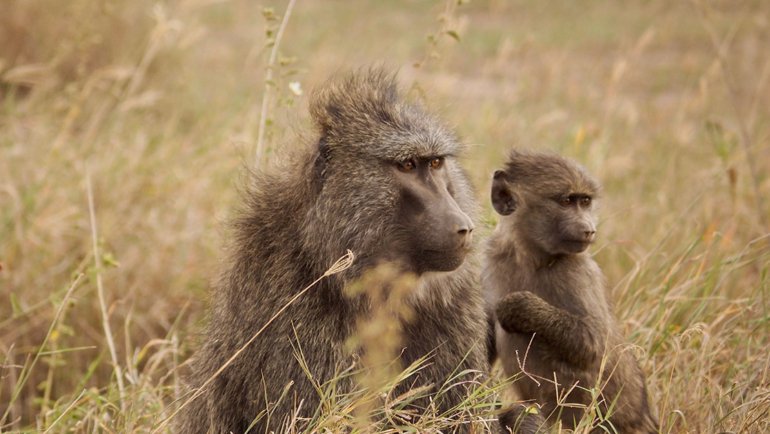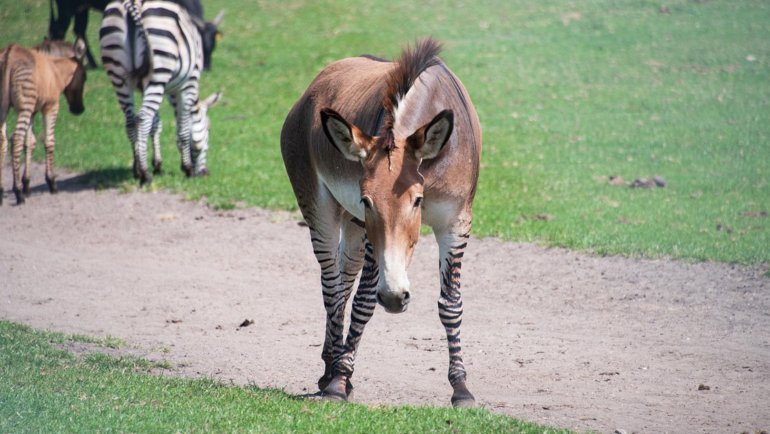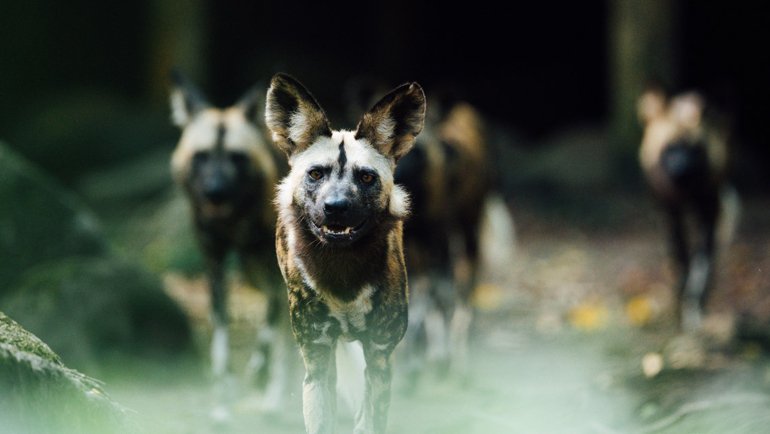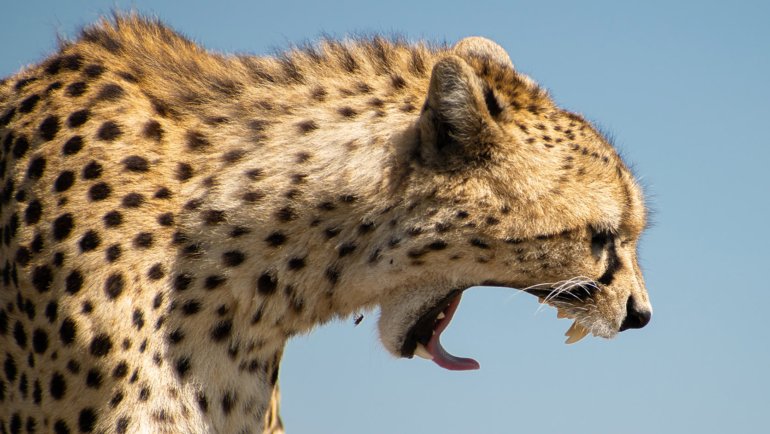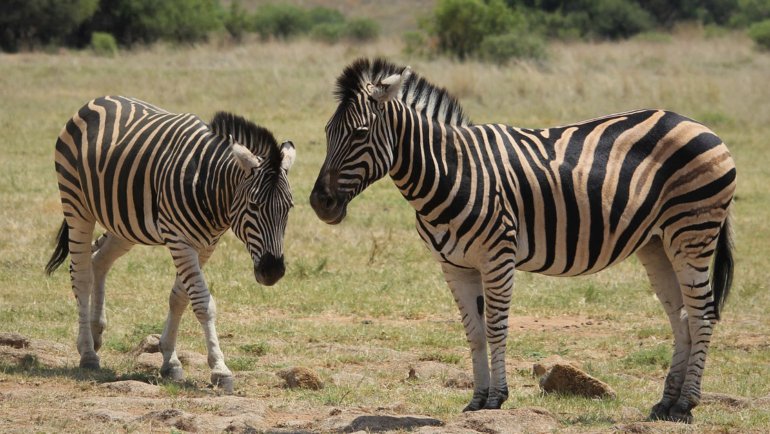Although both animals are carnivorous, hyenas and leopards are different species with distinct characteristics that mainly involve their specific habitats, body features and sizes, social structures, and hunting traits.
Continue reading this article as I will highlight all their similarities and differences and inform you who would win in a hyena vs. leopard fight.
Differences Between Hyenas and Leopards
Let’s start by taking a closer look at the unique characteristics of hyenas.

Hyenas
Species
Hyenas are the fifth smallest carnivorous mammals belonging to the Hyanedia family. Despite exhibiting plenty of similar characteristics, there are four hyena species.
Each one has some varying body features and habitats occupied. The species are; brown, spotted, striped, and aardwolf hyenas.
- Brown Hyena: Also called the strand wolf, its scientific name is Hyaena brunnea. Its pointed ears, short tail, and long, fluffy dark brown body distinguish it from other hyena species.
- Spotted Hyena: This hyena (Crocuta crocuta) is the largest and most common species. They may be differentiated from the other hyena species by their bear-like physique. Unlike most hyenas, their fur is covered with spots.
- Striped Hyena: Scientifically known as Hyaena hyaena, its most distinguishing feature is its long, thick neck which hinders it from freely moving its head.
They also have a uniform winter coat that stretches from their neck to the tail. The striped hyena is strictly nocturnal, meaning it’s only active at night.
- Aardwolf: It’s also referred to as the Maanhaar jackal since it looks more like a jackal than a hyena. Unlike the other hyena species, the aardwolf (Proteles cristata) does not hunt its prey, nor is it a scavenger. It only feeds on larvae and small insects such as termites.
Habitat
Although hyenas are geographically widespread, their preferred natural habitats mainly depend on the specific species mentioned above.
For instance, brown hyenas are mainly found in Namibia, Mozambique, South Africa, and Zimbabwe. However, the Kalahari Desert is home to the greatest remaining population of this hyena species.
Spotted hyenas’ habitats include savannas, woodlands, semi-arid regions, and even highlands up to 4,000 meters. They are mainly found in large numbers in the sub-Saharan parts of Africa, like Namibia and Botswana.
Striped hyenas inhabit a wider ecosystem than any other hyena species. They are present in the northeastern parts of Africa, Asia, the Middle East, and the southern regions of Siberia.
Also read: Are There Leopards in The Jungle?
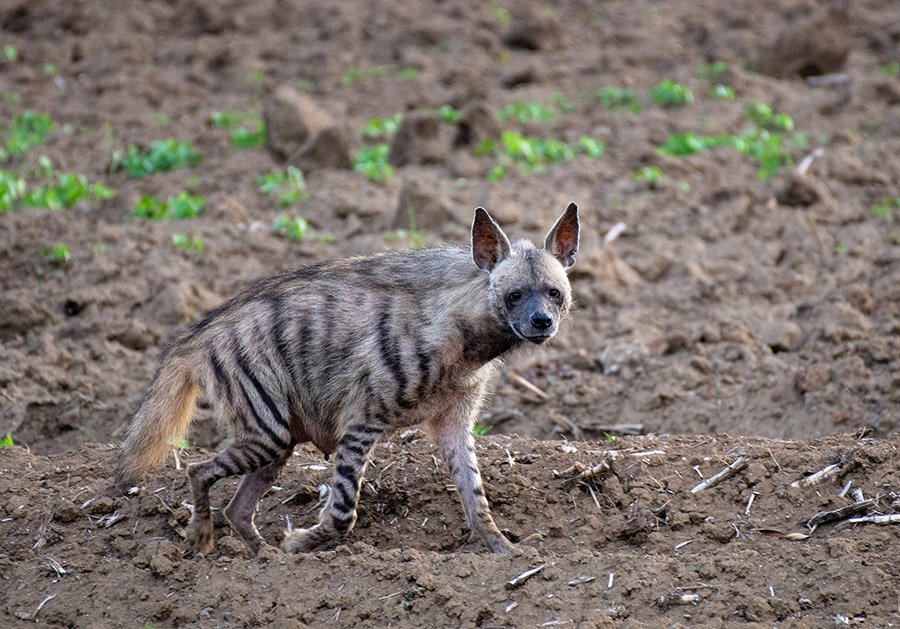
Social Structures
Hyenas are social creatures living in groups known as clans. A single clan can have a maximum of 80 members. The stripped, brown and aardwolf hyenas have male-dominated clans.
However, in spotted hyenas’ clans, females are superior and rank higher; since they are more aggressive and powerful than their males.
Hunting and Feeding Traits
Besides being carnivorous, hyenas are known to be scavengers (they can feed on dead and decomposed flesh). Since they also hunt their prey (with the sole exception of aardwolves), the size of a clan is typically the main determinant of the size of the meal to hunt.
The larger the clan, the easier it is to capture large animals, such as buffaloes, hippos, and wildebeests. They also have the power to intimidate and steal food from other predators like lions, cheetahs, and leopards.
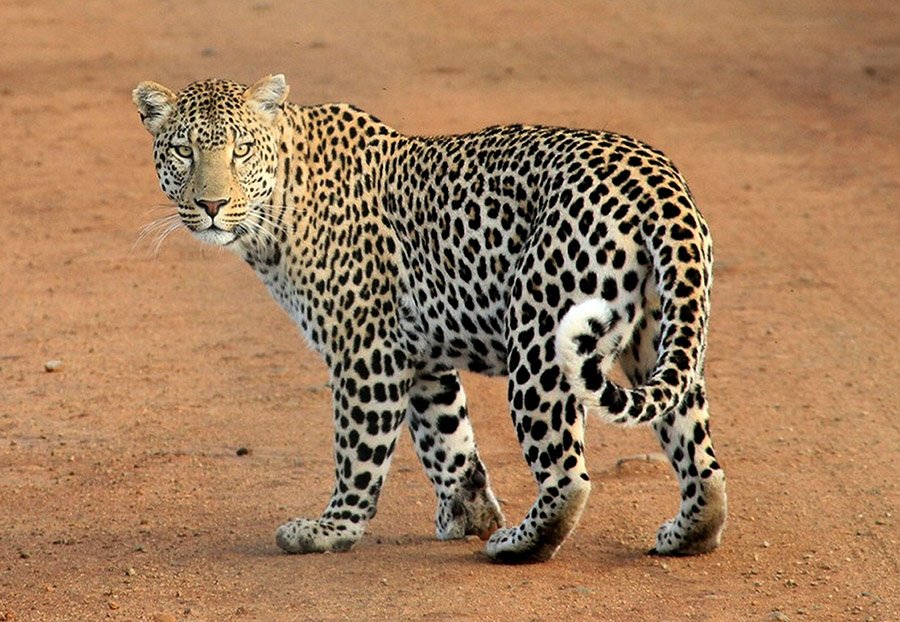
Leopards
Since you are aware of hyenas’ distinct features and characteristics, let’s focus on the leopards’ unique attributes that differentiate them.
Species
Unlike the hyena family, which is divided into four species, leopards have a single species, further divided into eight subspecies.
However, each subspecies has some distinct features due to differences in geographical location and climatic conditions of each habitat.
- African Leopard: This leopard (Panthera pardus pardus) lives in various African environments. Therefore the color of its fur varies greatly, with some appearing pale yellow or golden and others black (black panthers) or dark brown.
- Indian Leopard: This subspecies (Panthera pardus fusca) is slightly smaller than the African leopard. It has muscular legs and big rosettes. The color of its fur can range from light or cream white to dark gold and grey.
- Javan Leopard: Although slightly larger than the Indian subspecies, the leopard (Panthera pardus melas) shares the same body features as the latter.
- Arabian Leopard: It’s the smallest subspecies, with the color of its coats ranging from golden to pale yellow. Some of these leopards (Panthera pardus nimr) are brownish or grey, but all are coated in medium-sized rosettes that help them blend in with their dusty environment.
- Persian Leopard: They (Panthera pardus tulliana) have greyish or mildly reddish fur that is naturally dotted with big, pale, or dark rosettes, depending on the individual rosettes.
- Amur Leopard: This leopard (Panthera pardus orientalis) is one of the largest subspecies, and its thick, pale cream fur and evenly spaced rosettes make it easy to distinguish it from others.
- Indo-Chinese Leopard: Despite their bigger body size, these subspecies (Panthera pardus delacouri) are almost similar to the Javan and Indian leopards.
- Sri Lankan Leopard: This big cat (Panthera pardus kotiya) has golden fur covered in plenty of closely-set rosettes and dark spot patches.
Also read: Leopard vs Cougar: Main Differences & Who Wins a Fight?
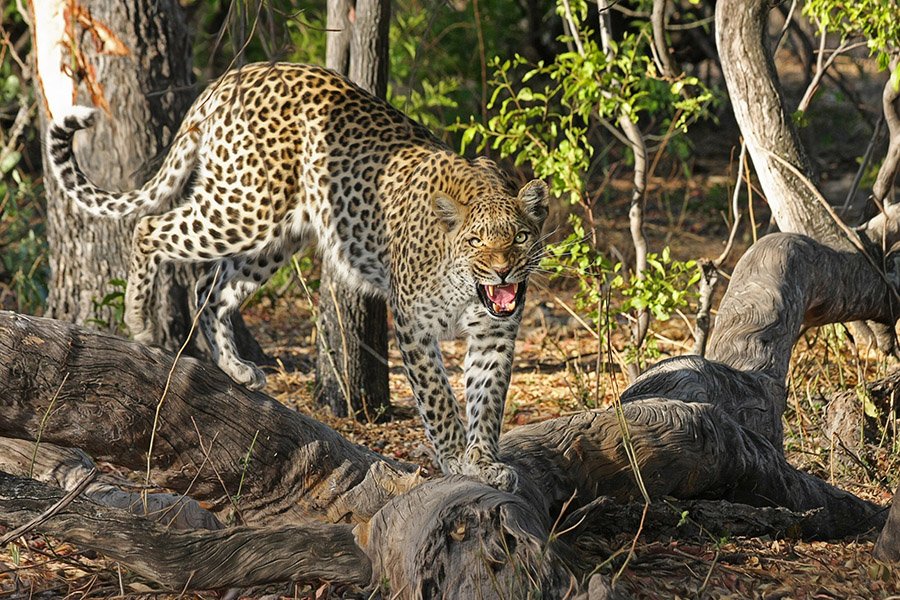
Habitat
Leopards are known to have the widest geographical habitat location among the cat family, but similar to hyenas, different subspecies occupy various global ecosystems.
However, it’s easy to know where each species is found since their first names indicate the place they are found. For instance, it’s evident that the African leopard’s main habitat is in Africa; the Indo-Chinese leopard is present in India and China, while the Javan leopard is on Java island in Indonesia.
Apart from the Arabian leopard (whose habitat comprises semi-arid regions of Israel and the Middle East); and the snow leopard (present in the cold areas of Central Asia), most leopards prefer savanna, jungles, and rainforest environments.
Social Structures
One major difference between hyenas and leopards is their social behavior. Unlike hyenas, which are social creatures, leopards are solitary creatures that live and hunt alone.
Hunting and Feeding Traits
A common similarity of both predators is their nocturnal trait which means they mainly hunt at night. However, unlike hyenas, leopards are not scavengers; hence they only feed on freshly hunted prey.
Also read: Do Tigers Eat Leopards? A Complete Answer
Leopard vs. Hyena: Who Would Win a Fight?
It’s time to address this hot topic of who would win the leopard vs. hyena fight. In a one-on-one duel, the leopard’s significant strength, speed, and ferocious traits would assist it in over-powering the scavenger.
However, it’s essential to note that the hyenas’ strength in numbers often makes them superior to leopards. It’s common for hyenas to steal food and, at times, feed on leopards; they usually attack them in their clans of more than 20 adult hyenas.
Frequently Asked Questions
Do Leopards Eat Hyenas?
Although such instances are rare, a leopard can attack, kill and eat a hyena when food is scarce. On the other hand, since they are opportunistic feeders, hyenas are known to eat leopards when they kill them, regardless of whether there is a scarcity or abundance of food.
Can Hyenas Climb Trees?
No! Hyenas cannot climb trees since they lack retractable, sharp, and strong claws that enable leopards to be excellent tree climbers.
The leopard’s ability to climb to the topmost part of the highest trees is a defensive mechanism it uses to hide its meals and also seeks refuge whenever the hyena’s clan attacks it.
Final Thoughts
Although the leopard has a higher chance of winning the duel, the big cat is usually intimated and seeks refuge whenever it sees a hyena. It knows that the scavengers usually travel in packs; hence if it spots a single hyena, it knows that the other clan members are nearby.
